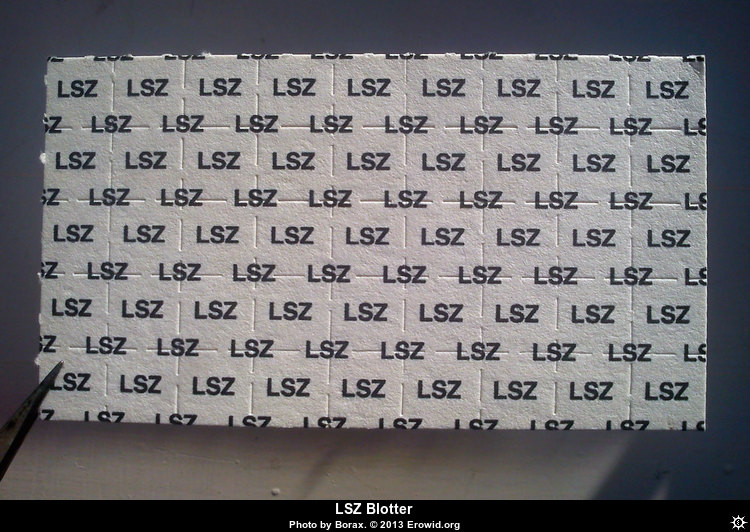LSZ: Difference between revisions
Jump to navigation
Jump to search
| Line 5: | Line 5: | ||
= Dosage = | = Dosage = | ||
Light | {| class="wikitable" | ||
|+ Oral | |||
Common | |- | ||
| Light || 100-150μg | |||
Strong | |- | ||
| Common || 150-300μg | |||
|- | |||
| Strong || 300μg+ | |||
|} | |||
= Duration = | = Duration = | ||
Onset | {| class="wikitable" | ||
|+ Oral | |||
Total | |- | ||
| Onset || 90-120 minutes | |||
|- | |||
| Total || 7-10 hours | |||
|} | |||
= Effects = | = Effects = | ||
Revision as of 12:53, 16 July 2014

LSZ, also known as Lysergic acid 2,4-dimethylazetidide, is a hallucinogenic drug and an analogue of LSD developed by the team led by David E. Nichols at Purdue University. While LSZ has subtly different effects than LSD, it appears to be slightly longer lasting and slightly more potent.
Dosage
| Light | 100-150μg |
| Common | 150-300μg |
| Strong | 300μg+ |
Duration
| Onset | 90-120 minutes |
| Total | 7-10 hours |
Effects
While LSD has subtly different effects than LSD, it appears to be slightly longer lasting while also having a longer comeup.
Harm Reduction
While widespread use of LSZ is relatively new and therefore its full impact is unknown, it is likely that it has a similar safety profile to LSD. Refer to LSD and Psychedelic Harm Reduction for more information.
Legal status
America
Controlled in the United States via the Federal Analog Act but only if it is intended for human consumption.